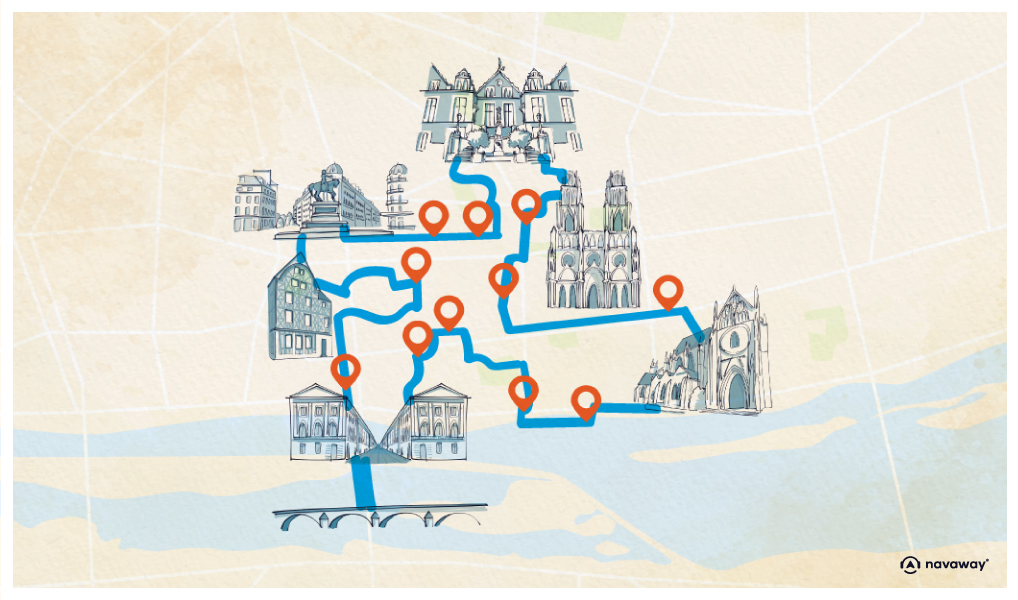
View from Rue Jeanne d’Arc

This point of interest is available as audio on the tour: Visit Orleans, Walking through history with Clovis, Joan of Arc and Attila
As you stand here on Rue Jeanne d’Arc, looking straight ahead to the majestic Sainte-Croix Cathedral, you’re taking in one of the most iconic views of Orléans. It didn’t happen by chance! This breathtaking perspective is the result of years of ambitious urban planning—six entire streets were demolished to create this perfectly aligned view. The proportions are so well balanced that they give you just the right distance to admire the cathedral in all its grandeur. Before we move on, take a look at the little street opening up to your right. Its name tells a rather surprising story from the city’s past: the tale of the “Pastoreaux massacre”—a dramatic moment in Orléans’ history that may have led to the nickname given to its people. Let’s go back to the year 1251, during the 7th Crusade. King Louis IX—also known as Saint Louis—had just been captured in Egypt. Back in Europe, people were shocked. How could such a devout king be abandoned by God? That’s when a mysterious monk, known only as the “Master of Hungary,” stepped onto the scene. Claiming to have seen a vision of the Virgin Mary, he began preaching that the poor should take up the cross and march to the Holy Land to rescue the king. He gathered a ragtag army of shepherds and peasants—known as the Pastoreaux—and led them across France. When they arrived in Orléans, they preached passionately in the streets, blaming the Church and the nobility for the king’s capture. According to legend, a university student dared to challenge them, shouting that it was all nonsense. One of the shepherds struck him down, and what followed was chaos—a violent riot in which the Pastoreaux reportedly killed around 30 clerics and students. And the townspeople? It’s said they just stood by, watching the spectacle unfold. That reaction—real or exaggerated—may be what gave rise to the nickname Les Chiens d’Orléans, or “The Dogs of Orléans,” suggesting that the locals were cold-hearted or even enjoyed the violence. But don’t worry, there’s another version of the nickname’s origin—much more flattering. Fast forward to the Hundred Years’ War and the famous Siege of Orléans. According to this version, the nickname “The Dogs of Orléans” didn’t come from the townspeople themselves, but from their weapons. In old French military slang, the “dog” referred to part of the firing mechanism of a cannon or musket—a small piece that helped trigger the shot. The defenders of Orléans were so skilled and fierce with their artillery that the English began calling them “The Dogs of Orléans.” Over time, the name stuck. What started as a nickname from the battlefield came to symbolize the loyalty and tenacity of the city’s people—though some say it also hints at a certain cool-headedness, or even stubborn pride.


Discover Orleans with app
An interactive guide through the most beautiful streets, squares, and districts
23 fun audioguides full of historical facts, anecdotes, and legends





Comments